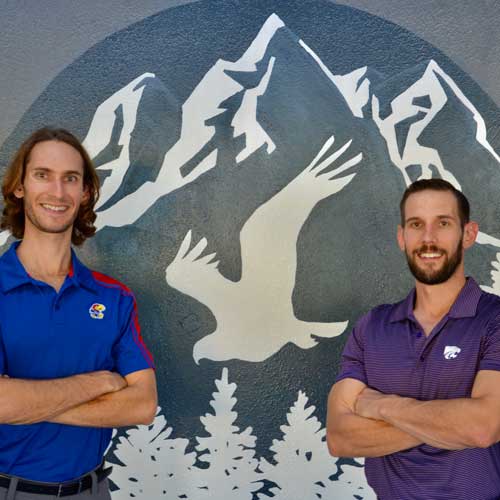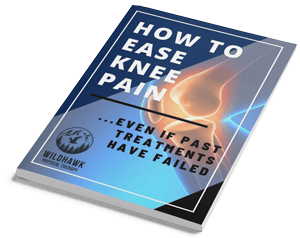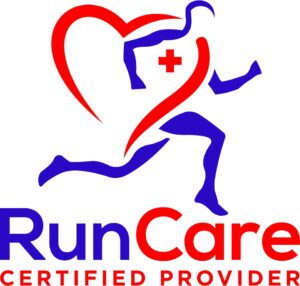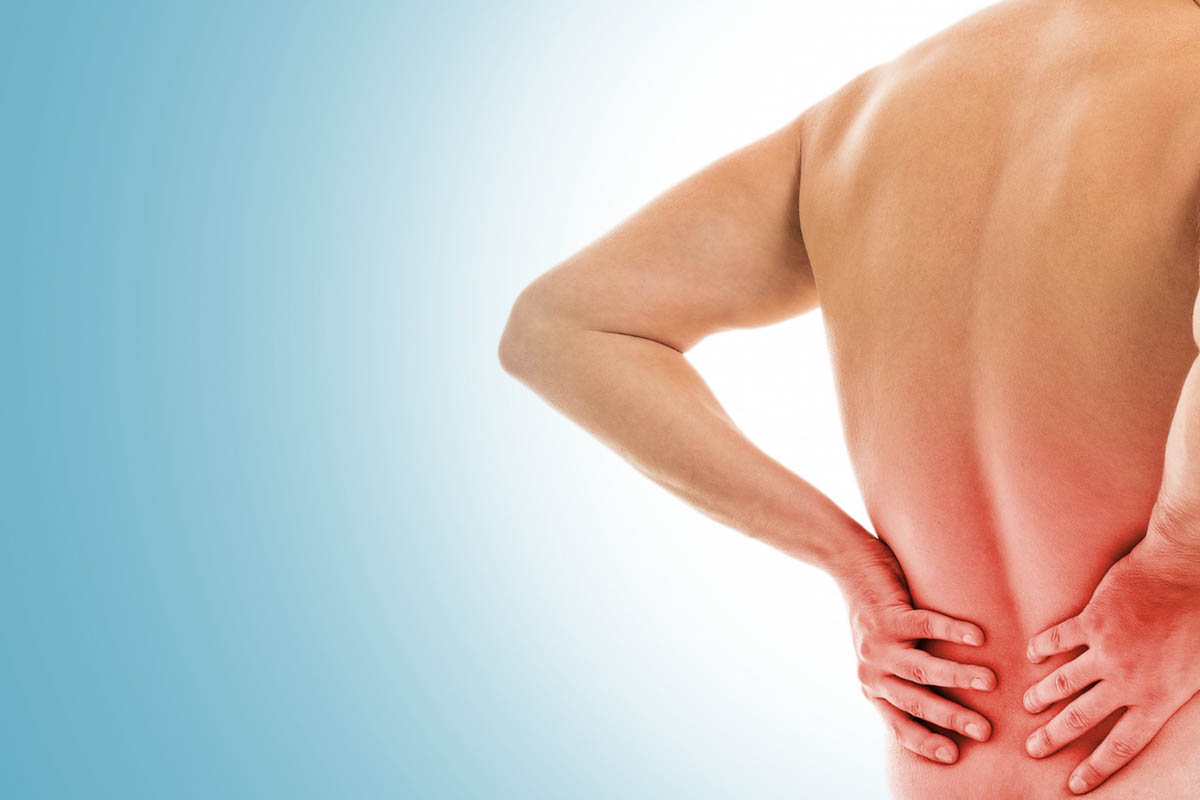
Back pain is a common issue that affects millions of people around the world. It’s often associated with a variety of causes, but one of the most prevalent and sometimes overlooked factors is muscle stiffness and tightness. Muscle stiffness is thought to be one of the risk factors associated with sports injuries, as it can restrict fluid movements and increase the risk of injury. Up to 1 in 4 people experience long-lasting (chronic) muscle pain and stiffness. In fact, in 2019, 39.0% of adults had back pain, underscoring the significant impact this condition has on daily life. Understanding the relationship between stiff or tense muscles and back pain can be key to both prevention and effective treatment, significantly improving quality of life.
Anatomy of the Back and Muscles
The back is a complex structure made up of bones, muscles, ligaments, and nerves. The spine, which provides structural support, is surrounded by layers of muscles, including the gluteal muscles and core muscles, that help in movement and stability. Key muscles include the erector spinae, latissimus dorsi, and smaller muscles such as the multifidus and rotator cuff muscles. These muscles work together to support the spine, maintain posture, and allow for fluid movements and a wide range of motions. However, when these muscles become stiff or tight, they can lose their ability to function properly, leading to pain, discomfort, and reduced mobility, particularly in the lumbar spine.
What are Stiff and Tight Muscles?
Stiff and tight muscles occur when muscle fibre becomes shortened and less flexible. This can result from overuse, underuse, injury, or poor posture. When muscles are stiff, they resist stretching and lengthening, leading to a restricted natural range of motion and a feeling of tension, which can also affect the spinal discs. Over time, this stiffness can cause muscle imbalances and increase the risk of pain, particularly in the back, where muscle tension can significantly affect spinal alignment and movement, contributing to chronic pain.
Muscles That Can Trigger Back Pain When Stiff and Tight
Certain muscles, when stiff and tight, are more likely to contribute to back pain due to their location and role in supporting the spine and pelvis.
Hamstring Muscles
The hamstrings, located at the back of the thighs, connect to the pelvis and are closely related to the gluteal muscles. When these muscles are tight, they can pull on the pelvis and affect the alignment of the lower spine, leading to stiffness and pain in the lower back.
Rotator Cuff Muscles
The rotator cuff muscles in the shoulder play a crucial role in stabilizing the shoulder joint. If these muscles become tight, they can alter the biomechanics of the upper back and neck, potentially leading to upper back pain.
Neck Muscles or Trapezius
The trapezius muscles span the upper back and neck. Tightness in these muscles can result in tension headaches, neck stiffness, and upper back pain, often spreading to the shoulders.
Obliques
The oblique muscles, located on the sides of the abdomen, help stabilize the core and support the spine. Tight obliques can contribute to lower back pain by pulling on the pelvis and spine, leading to misalignment.
Hip Flexors
The hip flexors are a group of muscles that connect the lower back to the hips. When these muscles are tight, they can pull the pelvis forward, causing an exaggerated arch in the lower back and leading to pain and discomfort.
Causes of Stiff and Tight Muscles in the Back
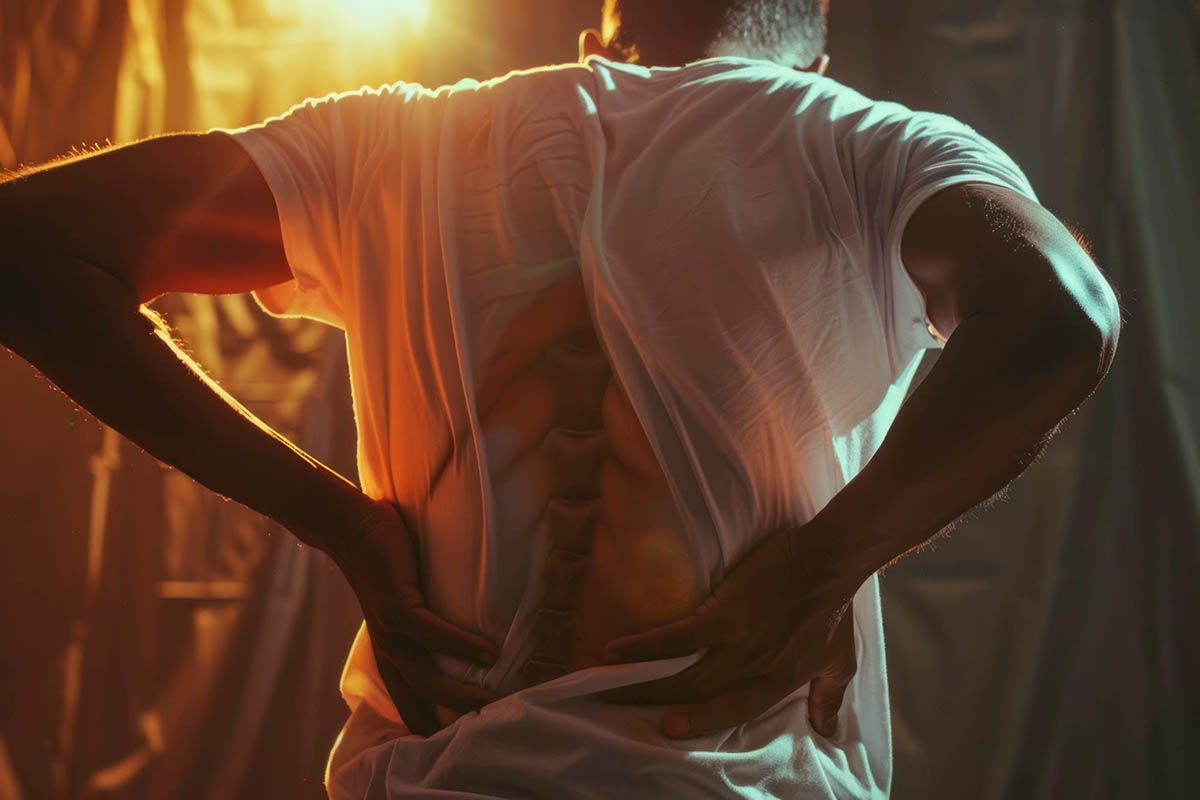
Muscle stiffness and tightness can be attributed to various factors, such as a sedentary lifestyle or strenuous exercise, where prolonged sitting or minimal physical activity causes muscles to become rigid. Incorrect posture, including slouching or improper alignment while sitting and standing, can place undue strain on muscles, contributing to their stiffness. Overuse or repetitive motions from everyday activities, like lifting or bending, may also lead to muscle tightness due to overexertion. Additionally, emotional stress can result in increased tension in the back and shoulders, exacerbating stiffness, especially in the cervical spine. Finally, inadequate stretching exercises can prevent muscles from maintaining elasticity, leading to shortening and diminished flexibility.
How Stiff and Tight Muscles Can Contribute to Back Pain
When muscles become stiff and tight, they can negatively affect the spine and surrounding structures, leading to back pain.
Decreased Range of Motion
Stiff muscles limit the ability to move freely, which can cause compensatory movements in other parts of the body, leading to unnatural strain and, eventually, back pain.
Spinal or Nerve Compression
Tight muscles can compress nerves or put pressure on the spine, causing pain that radiates from the back to other areas, such as the legs (sciatica), which is often linked to disc degeneration.
Referred Pain
Stiff and tight muscles can cause referred pain, where pain is felt in a different area from where it originates, complicating the physical examination. For example, Tight hip flexors or hamstrings can result in pain in the lower back.
Common Back Pain Symptoms with Stiff and Tight Muscles
When back pain arises from stiff lower back muscles, individuals often experience a range of symptoms, including a dull ache in the back and stiffness, particularly noticeable in the morning or following extended periods of sitting. In addition, there may be a limited range of motion in the back, hips, or legs, accompanied by muscle spasms or cramps, leading to joint stiffness. Furthermore, certain movements, such as bending or twisting, can exacerbate the pain, making everyday activities increasingly challenging, especially when mobility exercises are neglected.
Treatment Options
Managing back pain resulting from stiff and tight muscles typically requires a multifaceted approach, including medical treatment when necessary. How to release chronically tight muscles often involves physical therapy, deep tissue massage, and specific stretching exercises to improve flexibility and reduce tension. Physical therapy can be particularly beneficial, as a therapist can create a tailored exercise and stretching regimen, including gentle stretching, aimed at enhancing flexibility and strengthening surrounding muscles. Additionally, deep-tissue massage can effectively alleviate tightness and improve blood flow in affected areas. Utilizing heating pads and cold therapy can also be helpful in minimizing pain and inflammation. For symptom relief, over-the-counter pain relievers or muscle relaxants may be recommended to provide temporary relief. Lastly, proper posture training is essential for reducing muscle tension, preventing postural issues, and avoiding future discomfort.
Preventing Muscle Stiffness, Tightness, and Back Pain
Regular stretching exercises help maintain muscle flexibility and prevent stiffness. Exercises that focus on the abdominal muscles, back, and leg muscles can improve strength and stability, reducing the risk of back pain.
Regular Stretching and Exercises
Regular stretching helps maintain muscle flexibility and prevents stiffness. Exercises that focus on the core, back, and leg muscles can improve strength and stability, reducing the risk of back pain.
Strength Training
Strengthening the muscles that support the spine, such as the core muscles, back, and leg muscles, can improve posture and reduce the likelihood of muscle tightness and back pain.
Proper Posture
Maintaining good posture while sitting, standing, and sleeping can prevent muscle strain and stiffness. Ergonomic adjustments to your workspace or sleeping environment can be beneficial. Shoulders relaxed and head posture are also important.
Stress Management
Since stress can cause muscle tension, practicing stress management techniques like deep breathing, meditation, or yoga can help keep your muscles relaxed.
Adequate Hydration
Staying hydrated is essential for muscle health, as dehydration can contribute to muscle stiffness and cramps.
When to Seek Medical Attention
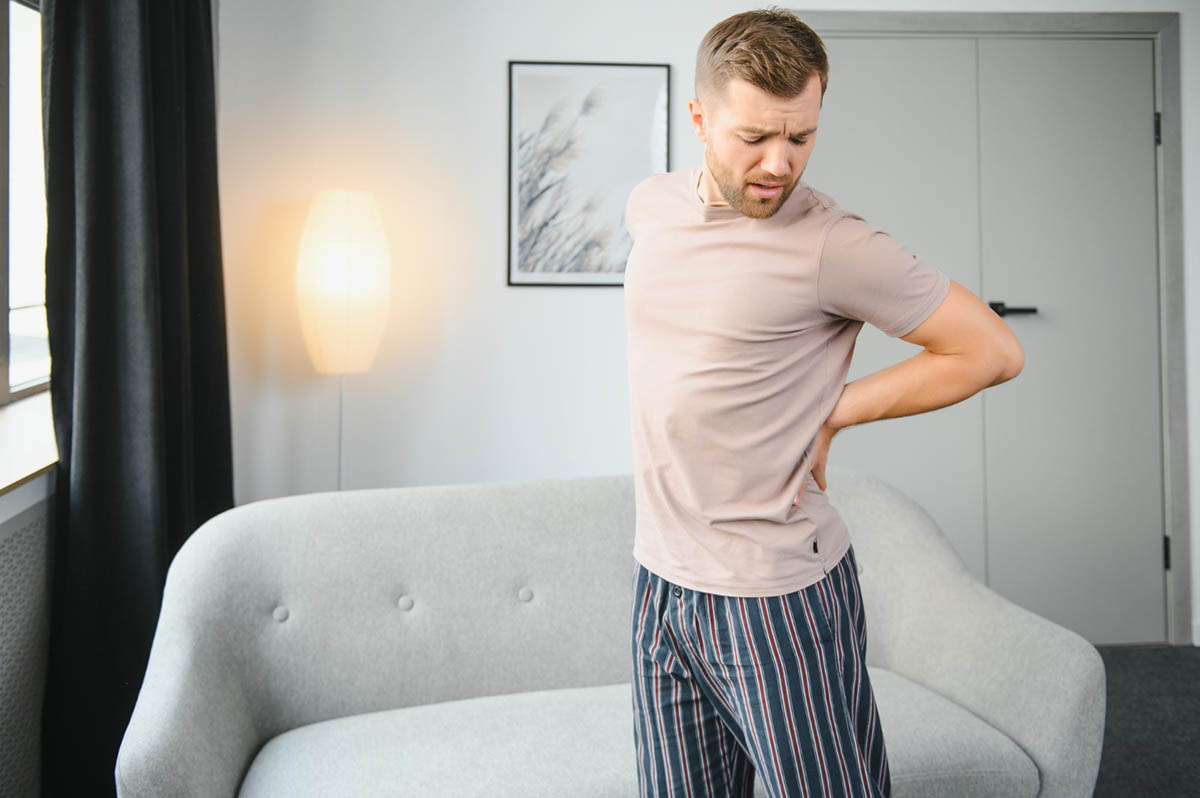
If you experience severe back pain when walking, persistent or worsening pain, or if your back pain is accompanied by other symptoms such as numbness or weakness, it’s important to seek medical attention. Chronic muscle stiffness and back pain should not be ignored, as they may indicate underlying conditions that require professional care.
Get Back to Living Pain-Free with Expert Care at Wildhawk Physical Therapy
At Wildhawk Physical Therapy in Asheville, NC, our experienced team is dedicated to helping you overcome back pain caused by stiff and tight muscles. Suppose you’re searching for back pain treatment Asheville. In that case, we offer personalized advice and treatment plans that address the root cause of your pain, whether it’s muscle stiffness, postural issues, or other contributing factors. With our team of experts, you can regain your flexibility, strength, and mobility, allowing you to live a pain-free life and enjoy a pain-free holiday season.
Conclusion
Stiff and tight muscles are a common cause of back pain, but with the right knowledge and care, you can prevent and manage this condition effectively. By understanding the connection between muscle stiffness and back pain and taking proactive steps to maintain muscle health, you can protect your back and enjoy a more active, pain-free life.
FAQs
Can stiffness cause back pain?
Yes, stiffness in muscles, particularly those that support the spine, can lead to back pain by reducing flexibility, altering posture, and increasing pressure on the spine and nerves.
Can stress cause back pain and stiffness?
Yes, stress can cause muscles to tense up, particularly in the back and shoulders, leading to stiffness and potentially contributing to back pain.
How to loosen tight back muscles?
Regular stretching, massage therapy, proper hydration, stress management, and maintaining good posture are effective strategies for loosening tight back muscles. Physical therapy can also provide targeted exercises to improve flexibility and reduce stiffness.


